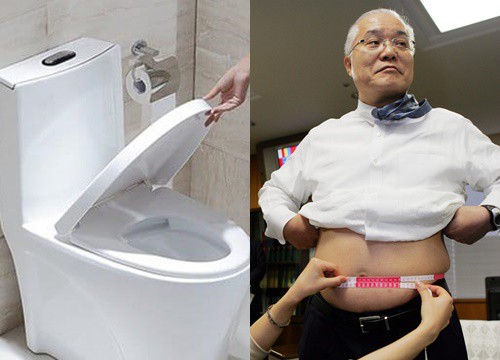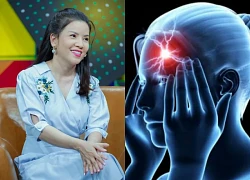Devil's bridge, glass beach and the strangest places in the world

3 | 0 Discuss | Share
Human life is meaningless without emotions, tears express one of those emotions.
Innumerable tears have been shed in literature - art past and present, tears existing in the middle of life is a "natural phenomenon"; those who lose the "ability to cry" - what a misfortune.
Tears can heal
Crying is a very normal human psychological phenomenon. When you're tired or depressed, some people advise you to cry out loud to release your sadness, and there's a reason for it. According to psychologist Ruthie Smith in the UK, crying is an effective solution to help people relieve stress and pressure. The more you cry, the more energy you release, the more comfortable the disease will feel. At this time, tears act as the most effective sedative!
There are 3 types of tears
A study by professor of neurobiology Robert Provine showed that there are three types of tears, namely: basal tears, irritation tears, and emotional tears. tear). In particular, basal tears are the most common, it helps the eyes maintain moisture, preventing infection. Emotional tears often flow when you have psychological fluctuations. Left, irritating tears are secreted as a response of the body to protect the eyes from harmful agents (such as when you chop onions).
Animals can cry too
Many people think that tears are only found in humans, but that's not true. Animals can also cry. Primates like monkeys, chimpanzees or some animals like elephants, dogs, cats... also shed tears when they express their emotions. Not long ago, a newborn elephant named Zhuang Zhuang in China couldn't stop crying when his mother rejected him. The incident only ended when the elephant was taken care of at a zoo. In addition, the story of a cow in Hong Kong is also quite touching. That day, a group of workers came to take this cow to the slaughterhouse, but as soon as it was brought to the door, the cow stopped, refused to continue, but knelt down on its front legs, eyes flowing like valves. sorry sorry.
Tears are filtered from blood
You cry but still do not know where the source of tears comes from? In the corners of our eyes are two tiny holes the size of a needle, this is where tears are released. Tears are filtered out from the blood in the human body, containing purified water, carbohydrates, lipids, electrolytes, lysozymes, lactoferrin, vitamins... There is a special thing when people are stressed, stressed, the body produces more adrenaline - enhances blood filtration to produce more tears. Tears are filtered from the blood and will be released if you have dry eyes or have a stressful, emotional state that requires crying. The more frustrated, tired and crying, the more the tear glands filter blood into tears.
People don't cry when they're sad
We often think that tears are a manifestation of sadness, people only cry when they are sad. However, the reality shows that tears are a complex reaction of the human body. We can cry when we are sad, but tears still flow when we are happy and happy. In fact, emotions like being overjoyed or emotional can also make people cry. At this time, tears are secreted to express messages, implicitly communicate with people around. Research by scientists from Yale University also adds that crying when happy is our body's way of balancing emotions. That's why if you cry because you're so happy, don't think it's strange, but enjoy them!
Tears have different layers
Tears are not simply salt water as many people think. They are structurally similar to saliva and other substances such as enzymes, lipids, metabolites, and electrolytes. Each tear has three layers: the mucus layer, the water layer, and the oil layer. The innermost layer of mucus keeps all tears firmly attached to the eye, the middle layer of water, which is also the thickest layer, has the effect of keeping water in the eye, repelling bacteria and protecting the cornea. Finally, the outer oil layer has the important job of keeping the surface of the tear smooth so that the eye can see through and preventing the remaining layers from evaporating.
You will cry less as you get older
The production of tears essentially decreases with age and this can lead to the development of dry eye disease. Dry eyes are a common symptom for people who are going through hormonal changes, especially women during pregnancy and menopause. On the other hand, heavy use of contact lenses and certain other medications can also cause dry eyes. However, if you have dry eyes, you are also more likely to develop blepharitis, which causes irritation or swelling of the eyelids.
Women cry more than men
In a scientific study, it was proved that women cry more often and about 3-4 times more than men. In particular, when women cry, it tends to be much more intense. The explanation for this phenomenon is that women often watch tragic movies and read emotional poetry more often than men. Men only have more empathy when they watch romantic movies with people they really love. Even men will feel uncomfortable when they see someone crying and they tend to ignore the other's feelings if they cry.
Crying relieves pain, improves mood
In addition to self-soothing, emotional tears release oxytocin and endorphins. These substances make us feel good and relieve pain both physically and mentally. In this way, crying can help relieve pain and promote feelings of well-being, which improves mood. This is why they are often called the happy hormone.
Crying releases toxins and reduces stress
Tears can wash away sadness, but they can also cleanse our bodies of stress-related toxins. Research also shows that grief tears contain certain stress hormones and other chemicals. Researchers believe that crying can reduce the levels of these substances in the body, which in turn can reduce stress.
Crying supports a good night's sleep
A small 2015 study found that crying can help babies sleep better. Whether crying improves sleep in adults has not been studied. However, the soothing, mood-enhancing, and pain-relieving effects of crying can make falling asleep easier even for an adult.
Crying helps fight bacteria
Crying helps kill bacteria and keep your eyes clean because tears contain a substance called lysozyme. In the lab, lysozyme has such powerful antibacterial properties that it can even fight bioterrorism agents, such as anthrax.
Crying improves eyesight
Tears are basically secreted every time we blink, helping to keep the eyes moist and prevent dry eyes, affecting vision.
The strongest "fart" person, the most married person and the Guinness records have "run out of words"  Hà Hà18:10:50 04/09/2021The Guinness World Records or Guinness Book of Records is a collection of world records recognized around the world. Among them, there are many unique stories that make the reader "speechless". The most married man in the world This record belongs to Mr. Mustafa Samida, born in...
Hà Hà18:10:50 04/09/2021The Guinness World Records or Guinness Book of Records is a collection of world records recognized around the world. Among them, there are many unique stories that make the reader "speechless". The most married man in the world This record belongs to Mr. Mustafa Samida, born in...

3 | 0 Discuss | Share

4 | 0 Discuss | Share

5 | 0 Discuss | Share

5 | 0 Discuss | Share

2 | 0 Discuss | Share

5 | 0 Discuss | Share

4 | 0 Discuss | Share

3 | 0 Discuss | Share

3 | 0 Discuss | Share

4 | 0 Discuss | Share

3 | 0 Discuss | Share

2 | 0 Discuss | Share



3 | 0 Discuss | Report